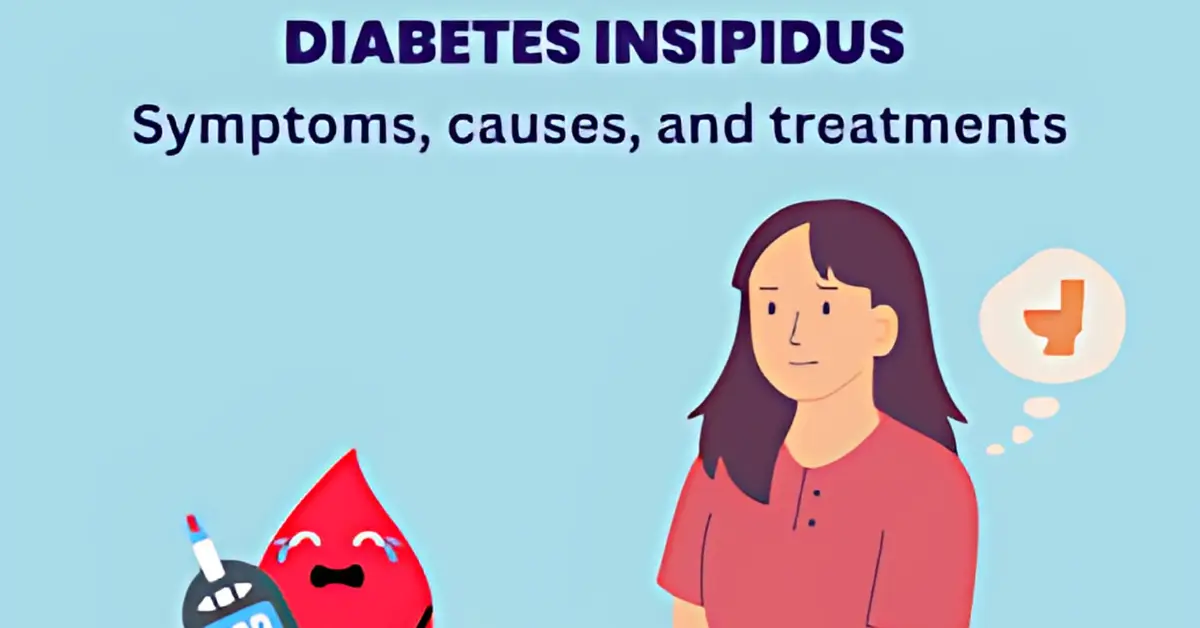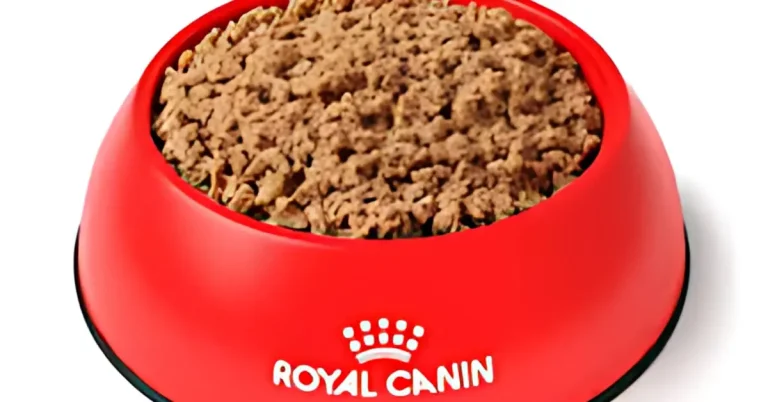Diabetes Insipidus (DI) is a rare and often misunderstood condition where the body’s ability to regulate water balance is compromised. This disorder causes excessive thirst and frequent urination, two symptoms that can disrupt daily life significantly. Despite sharing part of its name with diabetes mellitus, diabetes insipidus has a different origin and involves issues with the kidneys’ ability to retain water, rather than problems with blood sugar.
Understanding what causes DI, recognizing its symptoms, obtaining an accurate diagnosis, and exploring treatment options are key to managing the condition effectively. This guide will give you comprehensive information about diabetes insipidus, including lifestyle tips, dietary strategies, and the latest research to help you manage and live with the condition.
Table of Contents
ToggleKey Takeaways
- Diabetes Insipidus (DI) is a rare condition that affects the body’s ability to regulate water balance due to deficient vasopressin or kidney resistance to the hormone.
- The main symptoms of DI include excessive thirst (polydipsia) and frequent urination (polyuria), which can lead to dehydration if not managed properly.
- There are four types of diabetes insipidus: Central DI, Nephrogenic DI, Dipsogenic DI, and Gestational DI. Each type has different causes and treatments.
- Central DI is treated with Desmopressin (DDAVP), a synthetic form of vasopressin. Nephrogenic DI is managed through medications like thiazide diuretics and lifestyle changes.
- DI can lead to serious complications such as dehydration, kidney damage, and electrolyte imbalances if untreated, but early diagnosis and proper treatment can help control symptoms and prevent these issues.
- Hydration management and a low-salt diet are crucial components of living with diabetes insipidus, along with adherence to prescribed medications.
By understanding the causes, symptoms, and treatment options, you can manage diabetes insipidus effectively and maintain a healthy, active lifestyle.
What is Diabetes Insipidus?
Diabetes Insipidus is a rare disorder where the body is unable to maintain its fluid balance due to issues with vasopressin (also called antidiuretic hormone, or ADH). Vasopressin is a hormone produced by the hypothalamus and stored in the pituitary gland. Its main job is to tell the kidneys to retain water and produce concentrated urine. However, in DI, either too little vasopressin is produced or the kidneys don’t respond properly to the hormone.
Why is This Important?
In normal circumstances, vasopressin helps the kidneys conserve water, preventing excessive water loss in the urine. If this process is disrupted, urine output can increase significantly, leading to dehydration and a constant feeling of thirst. The condition can have significant effects on hydration, kidney function, and overall quality of life.
Types of Diabetes Insipidus
There are four primary types of diabetes insipidus, each with its own set of causes and treatment options. Understanding the differences between them is crucial for proper diagnosis and management:
1. Central Diabetes Insipidus (CDI)
Central diabetes insipidus (CDI) occurs when there is damage to the hypothalamus or pituitary gland, which disrupts the production or release of vasopressin.
- Causes: Brain injury, brain surgery, tumors, genetic mutations, or infections (e.g., meningitis).
- Symptoms: Increased thirst and excessive urination. CDI patients may also experience dehydration if fluid intake does not keep up with urine output.
- Treatment: Desmopressin (DDAVP), a synthetic form of vasopressin, is the primary treatment for central DI, helping to control urination and thirst.
2. Nephrogenic Diabetes Insipidus (NDI)
Nephrogenic DI occurs when the kidneys fail to respond to vasopressin. Even though vasopressin is present in the body, the kidneys cannot use it to concentrate urine.
- Causes: Genetic mutations, chronic kidney diseases, or medications such as lithium.
- Symptoms: Similar to CDI, but the kidneys cannot retain water, even in the presence of vasopressin.
- Treatment: NDI is managed by thiazide diuretics, indomethacin (an NSAID), and dietary changes, such as a low-salt, high-water diet.
3. Dipsogenic Diabetes Insipidus
Dipsogenic DI occurs when a malfunction in the thirst mechanism in the hypothalamus causes excessive fluid intake, leading to suppressed vasopressin secretion.
- Causes: Psychological conditions like psychogenic polydipsia, neurological disorders, or damage to the hypothalamus.
- Symptoms: Continuous thirst and drinking of large quantities of water, leading to excessive urination.
- Treatment: This form is primarily managed by behavioral therapy and careful monitoring of fluid intake.
4. Gestational Diabetes Insipidus
Gestational DI occurs during pregnancy, typically due to placental enzymes that break down vasopressin.
- Causes: Hormonal changes during pregnancy, specifically the enzyme vasopressinase, which breaks down vasopressin.
- Symptoms: Increased thirst and frequent urination during pregnancy.
- Treatment: Desmopressin is commonly used to treat gestational DI, and the condition typically resolves after childbirth.
Common Symptoms of Diabetes Insipidus
While the symptoms of diabetes insipidus may vary based on the type, the primary signs to look for are:
1. Excessive Urination (Polyuria)
This is one of the defining symptoms of diabetes insipidus. Individuals may produce up to 20 liters of urine per day, far more than the average person (around 1.5 to 2 liters). The urine will be very dilute with a low specific gravity, indicating that the kidneys aren’t concentrating it properly.
2. Excessive Thirst (Polydipsia)
As a result of frequent urination, the body loses large amounts of water, leading to extreme thirst. The body tries to compensate for water loss by increasing fluid intake. This is often unrelenting, and individuals feel compelled to drink water constantly.
3. Nocturia
People with DI often wake up multiple times throughout the night to urinate, which disrupts their sleep patterns. This condition, known as nocturia, can contribute to chronic fatigue and affect overall well-being.
4. Dehydration
Despite drinking large amounts of water, individuals with DI may still become dehydrated due to the excess urine production. Symptoms of dehydration include dry mouth, dizziness, headaches, and dry skin.
5. Fatigue and Cognitive Impairment
The constant need to urinate and drink water can cause sleep disturbances, leading to fatigue, irritability, and difficulties with concentration.
How is Diabetes Insipidus Diagnosed?
To accurately diagnose diabetes insipidus, doctors rely on a combination of tests and assessments:
1. Medical History and Physical Exam
The doctor will ask about the symptoms, any previous injuries or brain surgeries, and medications that could be affecting kidney function. They’ll also check for signs of dehydration.
2. Urinalysis
A urinalysis will typically show dilute urine (low specific gravity). This is a key indicator of DI because the kidneys are unable to concentrate urine effectively.
3. Water Deprivation Test
This test involves withholding water from the patient for a specific period while monitoring urine output. If the body does not concentrate urine despite dehydration, it suggests diabetes insipidus.
4. Blood Tests
Blood tests measure serum osmolality (concentration of particles in the blood) and sodium levels. Elevated sodium levels and high serum osmolality are often found in people with DI.
5. MRI Scan
An MRI scan of the brain can help identify any abnormalities or tumors in the pituitary gland or hypothalamus, which could be affecting the production of vasopressin.
Effective Treatment Options for Diabetes Insipidus
The treatment for diabetes insipidus varies based on its type. Below are the most common treatment strategies:
1. Central Diabetes Insipidus (CDI)
- Desmopressin (DDAVP) is the standard treatment for central DI. This synthetic form of vasopressin helps reduce excessive urination and excessive thirst.
- It’s available in several forms, including nasal spray, oral tablets, and injections.
2. Nephrogenic Diabetes Insipidus (NDI)
- Thiazide diuretics like hydrochlorothiazide help reduce urine production by increasing water reabsorption in the kidneys.
- Indomethacin (an NSAID) can also help improve kidney function in response to vasopressin.
- A low-salt, high-water diet is important for managing kidney function and preventing excessive water loss.
3. Dipsogenic Diabetes Insipidus
- This form of DI requires behavioral therapy to help manage fluid intake. The goal is to control the compulsive drinking that leads to excess water consumption.
4. Gestational Diabetes Insipidus
- Treatment often involves Desmopressin during pregnancy to manage the symptoms of DI. Most cases of gestational DI resolve on their own after childbirth.
Lifestyle Adjustments to Manage Diabetes Insipidus
While medication is essential, managing diabetes insipidus also requires making lifestyle adjustments to ensure proper hydration and prevent dehydration. Here are some practical tips:
1. Stay Hydrated
Since DI leads to increased urination, it’s essential to drink water regularly throughout the day to avoid dehydration. Keep a water bottle with you at all times and drink small amounts frequently, especially in hot weather or after exercise.
2. Monitor Urine Output
Keep track of your urine volume to ensure you’re replacing the fluids lost. You should aim to drink enough to keep up with the volume of urine produced.
3. Dietary Modifications
- A low-salt diet is recommended, especially for those with nephrogenic DI, as excessive salt increases fluid loss.
- Eat water-rich foods, such as fruits (e.g., watermelon, cucumber) and vegetables, to help you stay hydrated.
4. Sleep Hygiene
Since DI can cause nocturia (frequent urination during the night), it’s important to manage your sleep environment. Consider adjusting your bedtime routine and limiting fluid intake before sleep to reduce nighttime bathroom trips.
Frequently Asked Questions (FAQs)
Q1: Can diabetes insipidus be cured?
While diabetes insipidus cannot be cured, it can be managed effectively with treatment. For most people, symptoms can be controlled with medication and lifestyle changes.
Q2: How is diabetes insipidus different from diabetes mellitus?
Diabetes mellitus involves high blood sugar, while diabetes insipidus is a water balance disorder. In DI, the kidneys cannot retain water, while in diabetes mellitus, the body struggles to regulate blood glucose levels.
Q3: How can I live a normal life with diabetes insipidus?
With proper management, including hydration, medication, and lifestyle adjustments, most people with DI can live normal, fulfilling lives.
Conclusion
Diabetes insipidus is a rare but manageable condition. With early diagnosis, proper medication, and thoughtful lifestyle adjustments, individuals with DI can maintain their hydration, health, and quality of life. Early diagnosis and treatment are key to preventing complications such as dehydration and kidney damage.
If you experience symptoms like intense thirst or frequent urination, consult with a healthcare professional to get a proper diagnosis. With the right care, you can manage the condition and lead a healthy, active life
Hi, I’m Effi, a health writer passionate about simplifying wellness and empowering you to make informed health choices. With a focus on evidence-based content, I create practical guides and tips for a healthier lifestyle.






